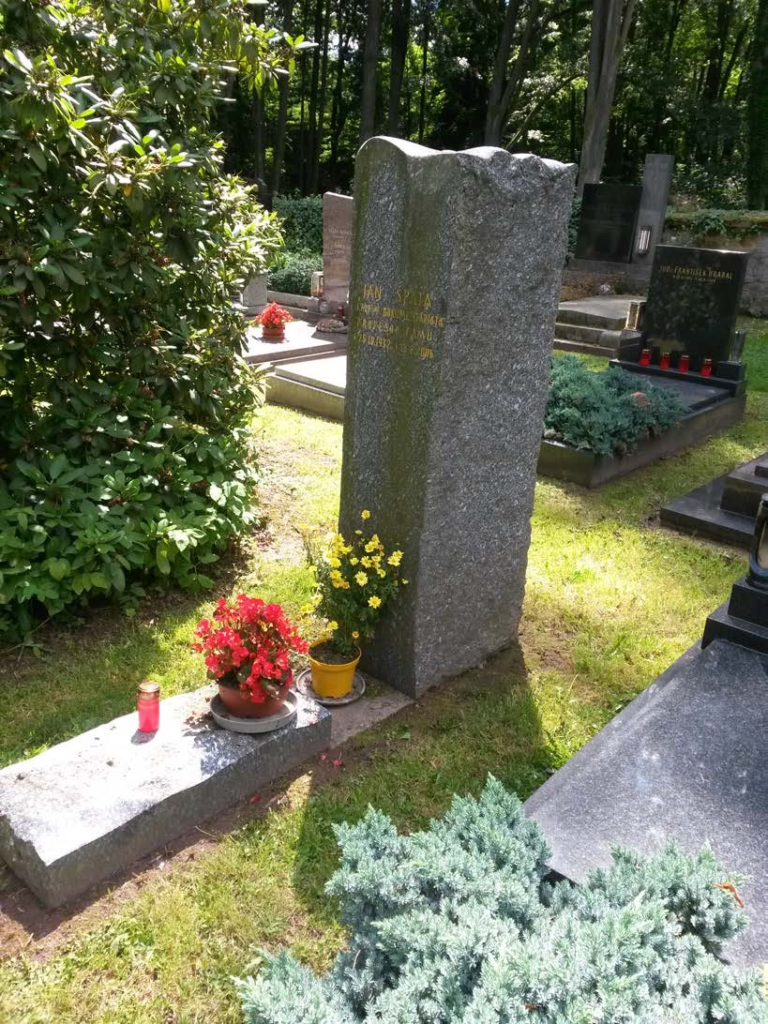Stonemasonry in the Říčany Region – Aldašín, Part 2

Many tombstones are made of the Říčany granite, some of the Vahlovice granite (amphibol-biotitic Blatno granodiorite from Central Bohemian Plutonic Complex), or dark veiny rocks – the Šlukonv “syenite” (dolerite), the Pohorsko “syenite” (diorite porphyry), Pecerady gabbro, or various kinds of foreign diorites and gabbros. Stonemasons often classified (and still classify) rocks under the so-called business names, which often do not correspond with the proper name of the rock in a true petrographic sense. They called all light intrusive rocks granites, whilst dark veiny rocks and various types of diorites, gabbros, porphyries, etc. were called “syenites”. The Hendrich and Borovička family gravestone is made of dark rock, presumably foreign polished gabbro or diorite. Next to the ledger there is a life-size statue of a girl made of white (presumably Lass) marble signed CERV 1944. The author of the statue is sculptor and woodcarver Jan Červ (1905–2002), who made many sculptures, reliefs and commemorative plaques in Prague and Pilsen. Opposite the grave there is a diorite gravestone (made for the Sázavský family). Rather than the stone of the grave we notice its bronze sculpture made by sculptor Blažena Borovičková-Podpěrová (1894–1980), one of the first students at the sculpture and stonemasonry school in Hořice, who cooperated with her husband and stonemason in Čáslav Karel Borovička. It is therefore possible that Karel Borovička (1893–1969) buried in the aforementioned grave of the Hendrich and Borovička family with Červ’s statue was Borovičková-Podpěrová’s husband.

Photo B. Dudíková Schulmannová, 2016.
From an archaeological point of view, Aldašín is a well-preserved location. A homestead with a recessed rectangular ground plan, probably a farm yard, and about 10 more houses around a rectangular square were uncovered near the Church of St. Jiří in 2006. Archaeologists also found parts of ceramics that prove that a settlement stood here as early as the 13th century.
Barbora Dudíková Schulmannová, Vojtěch Janoušek, Tomáš Navrátil, Václav Rybařík and Pavel Vlašímský
